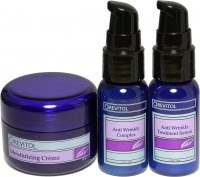Testosterone Is A Hair Hormone
Androgens, the family of hormones that includes testosterone is often referred to as a male hormone that does in fact affects hair growth. But wait it’s not just a male hormone, testosterone is very present in active levels in women as well as men. Women’s levels however are only 5 to 10% of men’s levels.
Testosterone levels rise at puberty for both boys and girls. This is noticed by the appearance of pubic and underarm hair but it also causes an increase of oiliness of the skin. This increase on hormonal hair can affect other areas of the body as well such as: upper lip, on the chin, around the nipples, upper thighs, lower legs and between the navel and pubic region. It is no uncommon for females to experience increases in hair on other regions as well: chest and abdomen, lower back, neck and cheeks.
What is the threshold for too much hair? There is no specific dividing line because the different types of increased hair growth is a very personal matter and so a personal definition is appropriate: hair that is enough to make a man or woman afraid that it will show is too much. For women this increase in hair hormones can result in weight problems and irregular periods and could mean you have a condition known as “Hirsutism” and you should talk to your doctor about it.
Hirsutism refers to increased hair in the so-called sexual distribution. Sexual distribution simply means skin areas on which men and women have different amounts of hair. Hair growth on these areas is due to the effect of testosterone on the hair follicle.
Unfortunately, women with hirsutism will have a hard time when they turn to health care providers for help. Some doctors fail to notice the extra hair. Or, if they do, they may tell women that the condition is hereditary with the implication that nothing can be done about it. While there is no question that some families and ethnic groups have a tendency to have more hair hormones, this does not mean that they cannot benefit from treatment.
Doctors will give other reasons for not treating hirsutism but women with increased hair hormones and should not settle for them. There are effective treatments for hirsutism, and women troubled by this condition are entitled to seek help.
Women’s levels of testosterone are at their highest in the late teens and early 20s. After that levels decline until after menopause when they are usually very low. But here’s the unfair part: once stimulated by testosterone, hair follicles stay over-active. A woman might have slightly high testosterone levels when she is in her 20s, but by the time she has a workup some years later, the elevations are already long gone. However the follicles haven’t forgotten and keep on producing thick, dark hairs.
Testosterone is released into the blood periodically and levels can fluctuate and so testosterone may be high or lower then normal. But hair follicles are stimulated every time the testosterone level goes up.
Treatments For Increased Hair Hormones
There are some very effective medical and non - medical solutions to increased hair hormones that you can do. There are basically three approaches: self-removal at home, use of electrolysis or laser and prescription medication.
Increased hair can be treated whether testosterone levels are normal or elevated. Medications that block androgens such as spironolactone (Aldactone®) work in both situations because they protect the hair follicles against the hair hormone testosterone.
Self-removal methods have been the most common for centuries, tweezing or plucking is the worst because it pulls the hair out by the root, which over time injures the skin leaving it bumpy looking. Snipping with a scissors is better than plucking though it does not last as long. Bleaches and chemical depilatories can be used but often cause skin irritation when left in too long. A razor is the most common way to remove hair but many women understandably do not like to use one because of the myth that it make hair grow back faster, thicker and darker. This is not true.
Electrolysis is a well-established method, which is permanent but expensive. Often continuing treatment is needed for women with substantial hair growth because new follicles become active. To get a good result, electrolysis needs to be done by proper equipment.
Laser is growing in popularity and is said to be a permanent hair removal solution. It too is very expensive and just how much of the hair is actually reduced in the long term is not yet been proven. Current laser technology is not suitable for those with very light or very dark skin as the pigmentary changes leaving skin looking botchy. There are no long term so it is hard to tell how happy people will be happy with the results later on.
There are only a few proven hair removal solutions that I recommend, Revitol, Verseo ePen , and Shave No More.
, and Shave No More.
How The Hair Hormone Testosterone Affect Hair Loss
Although hair hormones increase hair growth in women just the opposite can also occur and are often referred to as hair loss hormones. This is where both men and women experience thinning hair or hair loss. Again the main culprit here is an increase in testosterone levels causing hormonal hair loss.
With increased levels of testosterone the body will see an increase in unwanted hair growth but just the opposite can see an increase in hair loss or thinning hair. This happens when the body converts testosterone into a specific hair loss hormone called Dihydrotestosterone (DHT).
Many doctors agree that DHT is the leading cause of hair loss in both men and women. Using specific hair loss vitamins that are engineered to block DHT can prevent hormonal hair loss.





No comments:
Post a Comment